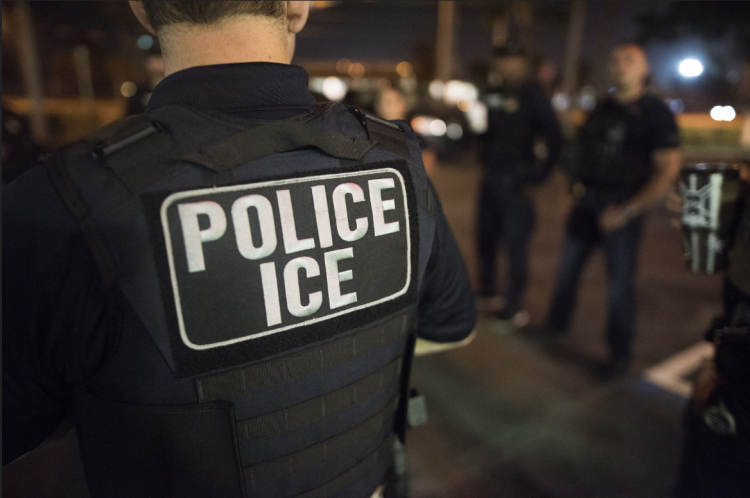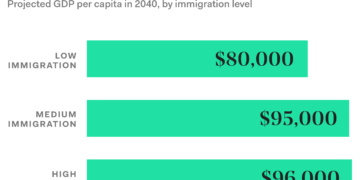[ad_1]
For years, U.S. Immigration and Customs Enforcement (ICE) has taken a harsh, punitive strategy that has ripped households and communities aside. The Trump administration’s strategy was significantly merciless and xenophobic, ensuing within the highest detention numbers the US has ever seen.
ICE’s new enforcement priorities hopefully sign an vital flip from the hate-driven enforcement of the Trump period.
On President Biden’s first day in workplace, he issued an government order and accompanying Division of Homeland Safety (DHS) memo. That memo put in place a 100-day assessment interval, throughout which DHS will probably be reviewing and drafting new steering on all facets of immigration enforcement.
This week, DHS launched new interim steering for all ICE personnel till its assessment is full. These new enforcement priorities—issued February 18—will probably be in impact till DHS Secretary Alejandro Mayorkas points additional steering, anticipated in Could.
What the February 18 ICE Steerage Covers
The steering covers all ICE personnel and operations, together with selections about whether or not to:
- Detain a noncitizen, and whether or not to launch a noncitizen now in detention.
- Put somebody into elimination proceedings or finish elimination proceedings which have already began.
- Cease or arrest a noncitizen solely due to civil immigration regulation violations, reminiscent of overstaying a visa.
- Give a noncitizen momentary permission to be within the U.S. by way of “parole” or “deferred motion.”
Who Are Enforcement Priorities Beneath the New Steerage?
The memo provides ICE employees tips about how one can make such selections by laying out three classes of enforcement priorities. Beneath this memo, ICE ought to be focusing its sources on individuals who fall into these three classes:
- Nationwide Safety. This class contains solely folks partaking in terrorism or espionage, and individuals who threaten the nationwide safety of the U.S. The memo makes it clear that “normal prison exercise” is not a nationwide safety risk.
- Border Safety. This class known as “border safety,” however doesn’t give attention to any precise risk. As a substitute, it establishes the seemingly arbitrary date of November 1, 2020 as a marker for border safety. Anybody who entered the U.S. unlawfully after November 1, 2020 or was not bodily current within the U.S. earlier than that date falls into this class.
- Public Security. This contains anybody whom ICE finds to be a “risk to public security.” The person additionally should meet certainly one of two different criterion: have what is thought beneath immigration regulation as an “aggravated felony” conviction (an excessively broad definition that truly contains many crimes which are misdemeanors beneath state regulation) or a gang-related conviction. Anybody who’s over 16 and has deliberately taken half in a gang may also be thought of a public security risk. ICE will proceed to depend on deeply flawed “gang databases” to find out whether or not somebody participated in gang exercise.
Notably, ICE officers should now severely contemplate the vital query of whether or not a noncitizen with a prison conviction of their previous is definitely a present risk to public security.
The memo provides officers clear directions on what to think about: how latest and the way severe was any prison exercise? Are there different vital components, such because the particular person’s private and household circumstances, any well being or medical points, ties to the neighborhood, or proof of rehabilitation?
Officers are instructed to pay “specific consideration” to circumstances by which the immigrant is aged or has a severe sickness (psychological or bodily) or has a pending immigration case or enchantment.
Larger Accountability for ICE
The memo lays out a number of accountability mechanisms for ICE in finishing up these new priorities.
First, ICE officers won’t want any approval to hold out enforcement in opposition to anybody within the precedence classes above. They may, nevertheless, want approval from native supervisors in the event that they need to conduct enforcement in opposition to anybody who doesn’t fall into these classes.
As well as, the ICE director will obtain a report that lays out all enforcement actions each week, in addition to a justification for every one. These vital mechanisms will assist the Biden administration make sure that ICE is accountable and following the rules.
Necessary Subsequent Steps for ICE and DHS
This memo represents a long-needed advance towards an immigration coverage centered on safety and inclusion, however there are nonetheless vital steps that the administration must take.
Key amongst these is addressing immigration detention. 14,000 folks stay in immigration detention, even in the midst of a worldwide pandemic. It’s crucial that DHS fastidiously assessment the information of the hundreds of individuals in ICE detention—and strategy all circumstances with a presumption that folks ought to be launched to the security of their households and communities.
Additional, DHS ought to transfer away from utilizing detention in any respect within the immigration context, together with by ending profit-driven detention contracts and investing in options to detention packages.
The modifications specified by this memo might assist the Biden administration start the troublesome activity of holding ICE accountable whereas shifting away from the unjust enforcement insurance policies of earlier administrations.
FILED UNDER: Biden-Harris Administration, Immigration and Customs Enforcement
[ad_2]
Source link


































